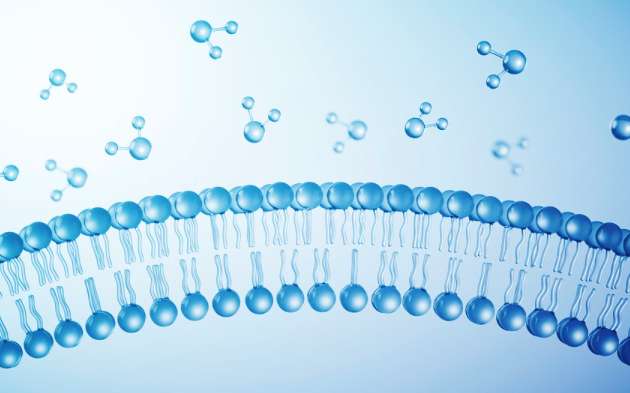Oligonucleotides are a class of small synthetic nucleic acid polymers with single or double strands that act on gene expression levels to regulate protein function for the purpose of treating diseases. The research and development of oligonucleotides has rapidly advanced, following small molecules and monoclonal antibodies, due to their unique ability to regulate gene transcription and translation at the RNA level, addressing gaps in therapies for rare and previously untreatable diseases. In recent years, 14 oligonucleotides have received global market approval, with over 70 Phase II or III clinical trials currently in progress, covering multiple therapeutic areas, including rare and incurable diseases [1].
Similar to traditional small molecule drugs, oligonucleotides require in vitro metabolic stability studies during the preclinical phase. Currently, all approved oligonucleotides have included in vitro metabolism studies in their application materials to clarify the metabolic ability of the drugs. This article mainly discusses the metabolic enzymes, in vitro research methodologies, and strategic approaches for studying oligonucleotide metabolism, serving as a guide for the R&D of novel oligonucleotide therapies.
Introduction to oligonucleotides
Oligonucleotides (Oligos), consisting of 12 to 30 chemically synthesized ribonucleotide units in single or double strands, function by targeting mRNA via the Watson-Crick base pairing principle [2]. They primarily fall into two categories: antisense oligonucleotides (ASOs) and small interfering RNA (siRNA). As novel therapeutic agents, oligonucleotides are polar and charged, necessitating chemical modifications and specialized delivery systems, resulting in distinct pharmacological profiles compared to traditional small molecules. Unmodified oligonucleotides typically exhibit poor druggability due to their polar nature, leading to unfavorable pharmacokinetic properties like instability and susceptibility to nuclease degradation. Additionally, their polarity results in weak binding affinity for the target mRNA. For clinical efficacy, chemical modifications to oligonucleotides are essential for enhancing their stability, reducing immunogenicity, and improving target affinity.
Intracellular delivery: Compared to ASOs with a molecular weight of approximately 7 kDa, double-stranded siRNAs with a molecular weight of approximately 14 kDa have limited uptake by cells due to their large molecular size and hydrophilicity. To increase cellular uptake, siRNAs are often linked to targeted ligands, such as N-acetylgalactosamine (GalNAc), or encapsulated in lipid nanoparticles.
Mechanism of action: Oligonucleotides are paired by Waston-Crick to bind to the target RNA with high selectivity, affinity, and degradation of the target RNA using endogenous nucleases or regulate RNA splicing and translation processes through stereoblockal ribosomal mechanisms. Currently, over 10 siRNAs in clinical development are delivered using nanoparticles, with additional ones carried by siRNA-GalNAc technology.
In vitro metabolism research methods for oligonucleotides
Marketed oligonucleotides are primarily metabolized by endonucleases and exonucleases, enzymes that are ubiquitously present in plasma and tissues, rather than by phase I and II metabolizing enzymes typically found in the liver [3]. Exonucleases target the ends of strands, releasing single nucleotides, while endonucleases cleave internally, producing strands of varying lengths. For example, ASOs circulate throughout the body via the bloodstream, with over 80% distributed to the liver and kidneys, mainly metabolized by exonucleases and endonucleases in the blood and tissues [4]. The resulting prototypes and nuclease-derived metabolites are mainly excreted in the urine [5]. Unlike most ASOs, siRNA drugs not only need chemical modification to avoid nuclease degradation but also require the protection offered by the drug delivery system to enter the target organ to avoid being excreted by the kidney and degraded by nucleases.
The unique mechanism of action of oligonucleotides and the complexity of gene silencing at the cellular level present new challenges for this class of drugs. WuXi AppTec DMPK has addressed these complexities by developing a suite of metabolic stability assays designed to assess the in vitro metabolism of oligonucleotide-based therapies.
Metabolic stability assay of liver homogenate
Most marketed oligonucleotides are rapidly taken up by the liver, with a small portion distributed to other tissues and metabolized by nucleases in the liver or other tissues. The liver homogenate is created by breaking down and homogenizing liver tissue, allowing for easy access, storage, and transport. The homogenate contains various drug-metabolizing enzymes in liver tissue. It serves as a valuable tool for studying the metabolism of oligonucleotides. Adding the drug to liver homogenate allows for the simulation of its metabolic process in vivo under controlled laboratory conditions. In conducting such experiments, factors like the pH, termination method, and homogenate concentration of the incubation solution all exert a certain effect on the metabolic outcomes observed. Therefore, the exploration of the liver homogenate metabolism model will delve into these three aspects.
Effect of incubation pH on homogenate metabolic results
The metabolic stability results of Patisiran for the antisense strand (AS) on the left and the sense strand (SS) on the right are shown in Figure 1. These results were obtained after incubation with human liver homogenates in a water bath for appropriate periods (e.g., 1, 2, 4, 6, and 24 h) at pH 5.0, 6.0, and 7.0, respectively. The results indicate that as the pH increases, the metabolic rate of both the Patisiran antisense and sense strands decreases.

Figure 1. Metabolic stability of Patisiran in human liver homogenates at different pH
Inclisiran and Vutrisiran showed the same trend under different pH conditions. For example, the residual rates of the sense strand were 16.1%, 23.0%, and 106.7% after incubation with human liver homogenate for 24 hours under the conditions of pH 5.0, 6.0, and 7.0 of the incubation solution, respectively.
Effect of termination method on metabolic results in homogenates
Patisiran was incubated with human liver homogenate for 24 hours, and the reaction was terminated and samples were treated with OTX (SPE), NP40 (SPE), and NH4OH (LLE), respectively [6, 7], as shown in Figure 2. The results showed that there is no significant difference in the termination effect of the three termination methods. Liquid phase extraction (LLE) consumables are less expensive than solid phase extraction (SPE) and this method is the preferred one.

Figure 2. Metabolic stability of Patisiran in human liver homogenates with different termination methods
Effect of homogenate concentration on homogenate metabolism
Five human liver homogenates of 0.1 mg/mL, 0.5 mg/mL, 1.0 mg/mL, 2.0 mg/mL, and 5.0 mg/mL were incubated with Patisiran in a water bath for 24 hours. The experimental results are shown in Figure 3, and the results indicated that the metabolic trend of Patisiran in different concentrations of human liver homogenates is slightly different.

Figure 3. Metabolic stability of Patisiran in different concentrations of human liver homogenates
Metabolic trends of compounds in human liver homogenates
The test compounds Patisiran, Inclisiran, and Vutrisiran were incubated in a water bath at 37°C for 24 hours under acidic conditions mimicking human liver homogenization. The experimental results are presented in Figure 4. Both the antisense strand and the sense strand of Patisiran exhibit obvious metabolic trends, and the sense strand of Inclisiran and Vutrisiran degrade significantly faster than their respective antisense strand.

Figure 4. To test the metabolic stability of the compound in human liver homogenates
In summary, we established a model using liver homogenates for the assessment of the in vitro metabolism of oligonucleotides.
Plasma metabolic stability experiment
As a commonly used in vitro matrix, plasma is easy to obtain, store, and transport, and can mimic the stability of drugs in the circulatory system in vivo, so it is often widely used at all stages of drug development. Given its richness in nucleases, assessing plasma stability is crucial in oligonucleotide studies. Through continuous optimization of experimental design, two commercial siRNAs were used with rat, monkey, and human plasma; After 24 hours of incubation with mouse, monkey, and human plasma, the remaining amounts of the five commercial ASOs were compared with the literature data. A substantial level of consistency was found. The experimental results are shown in Tables 1 and 2.
|
Compound |
Literature values |
Species |
Percent remaining upon incubation for 24 h (N=2). |
|
Inotersen sodium |
In vivo elimination half-life is approximately 1 month |
Human |
83.1 |
|
Mouse |
94.3 |
||
|
Monkey |
108.4 |
||
|
Mipomersen sodium |
It has an apparent plasma terminal elimination half-life of approximately 30 days. |
Human |
103.0 |
|
Mouse |
101.2 |
||
|
Monkey |
88.4 |
||
|
Nusinersen |
In plasma: 63–87 days |
Human |
100.0 |
|
Mouse |
95.9 |
||
|
Monkey |
80.4 |
||
|
Fomivirsen sodium |
Following intravitreal administration, with a half-life of approximately 55 hours in humans |
Human |
76.0 |
|
Mouse |
57.0 |
||
|
Monkey |
52.0 |
||
|
Volanesorsen |
ON |
Human |
94.1 |
|
Rat |
95.6 |
||
|
Monkey |
79.5 |
Table 1. Residual rate data for 24 h incubation of 5 commercial ASOs
|
Compound |
Literature values |
Species |
Percent remaining upon incubation for 24 h (antisense strand, N=2). |
Percent remaining upon incubation for 24 h (sense strand, N=2). |
|
Patisiran |
<1% left intact after 24h in serum independent of species |
Human |
0.9 |
0.4 |
|
Rat |
0.8 |
0.5 |
||
|
Monkey |
0.6 |
0.8 |
||
|
Inclisiran |
Relatively stable after 24 hours of incubation in human serum |
Human |
96.9 |
99.2 |
|
Rat |
81.8 |
100.0 |
||
|
Monkey |
72.3 |
98.1 |
Table 2. Residual data for 24 hours of incubation of 2 commercial siRNAs
By comparing the in vitro residual rate data with corresponding in vivo residual rates or half-life measurements, it becomes evident that there is consistency between in vitro and in vivo results. This indicates that oligonucleotide stability within the circulatory system can be effectively assessed through in vitro plasma stability experiments.
Liver S9 metabolic stability test
The liver S9 experimental study was carried out according to the liver homogenate metabolism model exploration conditions to determine the final incubation conditions.
The test compounds Patisiran, Inclisiran, and Vutrisiran were incubated at 37°C for 24 hours under the acidic condition of human liver S9, and the experimental results are shown in Figure 5. The metabolic trends of the test compounds in human liver S9 and human liver homogenate showed high consistency.

Figure 5. Metabolic stability of oligonucleotides in human liver S9
Metabolic stability testing of other matrices
Oligonucleotides are generally developed based on the platform, and in vitro metabolism studies are also based on the structural characteristics of oligonucleotides, with different systems selected accordingly. Experimental design of other matrices was performed according to the liver homogenate metabolic model exploration conditions to determine the final incubation conditions. In addition to liver homogenate, plasma, and liver S9, we have established incubation systems for liver lysosomes, hepatocytes, kidney homogenates, kidney S9, and brain homogenates. We can also recommend an appropriate in vitro metabolic system for the evaluation of the metabolic stability of oligonucleotides based on their structural characteristics and experimental purposes.
Strategies for metabolic research of oligonucleotides
As with traditional small molecule drugs, in vitro metabolic stability studies are often required during the preclinical phase to assess the stability of oligonucleotides. A comprehensive understanding of the metabolic properties can help in designing more rational early clinical trials and accelerate the drug development process. Generally, after administration in vivo, oligonucleotides first enter the blood circulation, and then metabolize and excrete in organs such as the liver and kidney. At present, most of the marketed oligonucleotides are rapidly taken up by the liver, with a small portion distributed to other tissues, where they undergo metabolism by nucleases in the liver or other tissues. The liver, being the main metabolic organ, constitutes the major focus of in vitro stability studies for oligonucleotides, followed by the kidney.
Experimental studies have demonstrated that the metabolic stability of oligonucleotides in the presence of hydrolases or nucleases in blood can be assessed by incubation in plasma in vitro. Similarly, incubation with liver homogenate allows for the observation of metabolic stability patterns akin to those observed in target tissues in vivo.
Additionally, the stability of oligonucleotides within target tissues can be further evaluated using in vitro models such as S9 fractions and lysosomes.
Final thoughts
In this review, we describe a series of metabolic stability models established by WuXi AppTec DMPK and corresponding research strategies to evaluate the metabolic stability of oligonucleotides in vitro. In vitro metabolic studies are of great significance for the prediction of clinical metabolism, which can only be predicted by in vitro studies before entering clinical trials. We have established a diverse range of in vitro metabolism research platforms, enabling us to select the most appropriate models tailored to the specific targets of oligonucleotides. This capability facilitates more efficient preclinical evaluation and research of these drugs.
Authors: Leilei Qin, Haijuan Liu, Yi Liu, Jie Wang, Xiangling Wang, Genfu Chen
Talk to a WuXi AppTec expert today to get the support you need to achieve your drug development goals.
Committed to accelerating drug discovery and development, we offer a full range of discovery screening, preclinical development, clinical drug metabolism, and pharmacokinetic (DMPK) platforms and services. With research facilities in the United States (New Jersey) and China (Shanghai, Suzhou, Nanjing, and Nantong), 1,000+ scientists, and over fifteen years of experience in Investigational New Drug (IND) application, our DMPK team at WuXi AppTec are serving 1,600+ global clients, and have successfully supported 1,500+ IND applications.
Reference
[1] Oligonucleotide Therapeutics: From Discovery and Development to Patentability;Pharmaceutics 2022, 14, 260
[2] Bennett CF. Therapeutic antisense oligonucleotides are coming of age [J]. Annu Rev Med, 2019, 70: 307-321
[3] Andersson, P. & Den Besten, C. CHAPTER 20: Preclinical and Clinical Drug-metabolism, Pharmacokinetics and Safety of Therapeutic Oligonucleotides. RSC Drug Discov. Ser. 2019-January, 474–531 (2019)
[4] Geary RS. Antisense oligonucleotide pharmacokinetics and metabolism [J]. Expert Opin Drug Metab Toxicol, 2009, 5: 381-391.
[5] Mustonen EK, Palomaki T, Pasanen M. Oligonucleotide-based pharmaceuticals: non-clinical and clinical safety signals and nonclinical testing strategies [J]. Regul Toxicol Pharmacol, 2017, 90: 328-341.
[6] Molecular Therapy: Nucleic Acids Vol. 21 September 2020. 725~736
[7] Metabolism of Antisense Oligonucleotides in Rat Liver Homogenates; JPET 292:140–149, 2000
Related Services and Platforms




-

 In Vitro ADME ServicesLearn More
In Vitro ADME ServicesLearn More -

 Novel Drug Modalities DMPK Enabling PlatformsLearn More
Novel Drug Modalities DMPK Enabling PlatformsLearn More -

 Physicochemical Property StudyLearn More
Physicochemical Property StudyLearn More -

 Permeability and Transporter StudyLearn More
Permeability and Transporter StudyLearn More -

 Drug Distribution and Protein Binding StudiesLearn More
Drug Distribution and Protein Binding StudiesLearn More -

 Metabolic Stability StudyLearn More
Metabolic Stability StudyLearn More -

 Drug Interactions StudyLearn More
Drug Interactions StudyLearn More
Stay Connected
Keep up with the latest news and insights.











